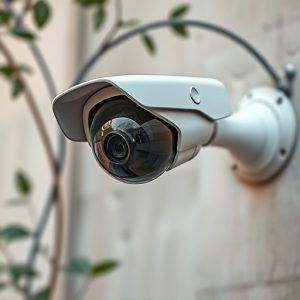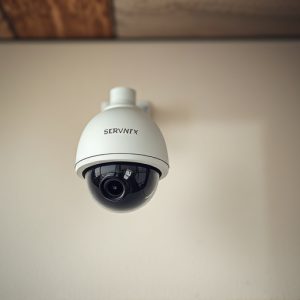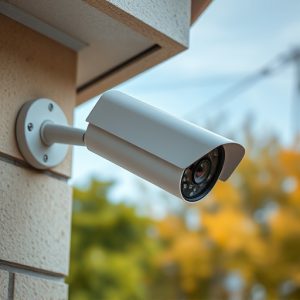Fake Security Cameras: Wiring Simulations, Deterrence, and Legal Insights
Fake CCTV cameras with simulated wiring are gaining popularity as an effective deterrent for crimina…….
Fake CCTV cameras with simulated wiring are gaining popularity as an effective deterrent for criminals, offering a cost-efficient security solution without capturing footage. Strategically placed, these decoy cameras significantly reduce break-ins and other criminal activities by manipulating human perception and behavior. Their weatherproof construction, advanced motion sensors, and realistic LED indicators enhance their deterrence value, especially in residential areas where they can substantially lower crime rates. However, legal and ethical considerations must be navigated before installation to ensure transparency and avoid misleading emergency services or causing unnecessary alarm.
“Uncover the intriguing world of fake security cameras, a popular yet often misunderstood deterrent option. This comprehensive guide delves into the intricacies of these simulated devices, from their psychological impact on potential criminals to practical installation strategies.
We explore how ‘simulated wiring’ enhances the illusion and effectiveness as a deterrent, and provide insights into legal considerations for their use. Discover the various types, optimal placement techniques, and the science behind why these fake CCTV cameras can significantly bolster home and business security.”
- Understanding Fake Security Cameras: A Comprehensive Overview
- Simulated Wiring: Enhancing the Illusion and Deterrence
- The Psychology Behind Their Effectiveness as a Deterrent
- Types and Placement Strategies for Maximum Impact
- Legal and Ethical Considerations: What You Need to Know
Understanding Fake Security Cameras: A Comprehensive Overview
Fake security cameras, also known as dummy or decoy cameras, are becoming increasingly popular as a deterrent for potential criminals. These devices are designed to resemble real CCTV cameras, often with added features like simulated wiring and LED indicators, providing an effective visual warning without the actual surveillance capabilities. Their primary purpose is not to capture footage but to deter crime by making intruders believe they are under constant observation.
The effectiveness of fake security cameras lies in their ability to create a perception of enhanced security. When strategically placed, these decoy cameras can significantly reduce break-ins and other criminal activities. Many models are designed with weatherproof housing and high-quality materials to ensure they withstand outdoor conditions, making them suitable for various environments. Additionally, some advanced versions include motion sensors that trigger flashing lights or audible alarms, further enhancing their deterrent effect. This simple yet powerful tool offers businesses, homeowners, and public spaces an affordable way to strengthen their security measures without the complexities of installing real CCTV systems.
Simulated Wiring: Enhancing the Illusion and Deterrence
The simulated wiring on fake security cameras plays a crucial role in enhancing their realism and deterrence value, making them an effective solution for property owners seeking to boost security without breaking the bank. This visual detail is not just about aesthetics; it tricks potential thieves into believing that they are dealing with genuine surveillance equipment, instilling a sense of fear and hesitancy. By mimicking the appearance of actual wiring, these fake cameras send a powerful message: “If you try something, you’ll be caught.”
The deterrent effect is two-fold. Firstly, it serves as a psychological barrier, deterring would-be criminals who may opt to target easier prey if they suspect their actions are being watched. Secondly, the realistic wiring adds an extra layer of complexity for intruders, potentially delaying their actions and providing valuable time for authorities to be alerted. This strategic deception is particularly useful in residential areas, where a visible security presence can significantly reduce crime rates without requiring extensive financial investments.
The Psychology Behind Their Effectiveness as a Deterrent
The presence of fake security cameras with simulated wiring can significantly impact an area’s deterrence levels, playing on human perception and behavior. Our brains are wired to respond to visual cues, and even a mock camera triggers a subconscious sense of surveillance, encouraging potential criminals to reconsider their actions. This psychological effect is powerful; individuals may feel a heightened sense of accountability, knowing that their actions could be captured, even if the device isn’t functional.
The deterrence factor stems from the camera’s ability to create an illusion of security. When integrated into public spaces or homes, these fake cameras send a clear message: “This area is monitored.” This simple visual reminder can act as a powerful deterrent, discouraging criminal activity by increasing the perceived risk and potential consequences.
Types and Placement Strategies for Maximum Impact
Fake security cameras, also known as dummy or simulated CCTV cameras, offer a cost-effective and aesthetically pleasing way to enhance security while maintaining a low profile. These devices come in various types, each with unique features to suit different environments. Dome-shaped cameras are popular for their discreet appearance and ability to blend seamlessly into indoor spaces, while bullet cameras provide a more visible deterrent with their sleek design, making them ideal for outdoor use. Some models feature LED indicators that mimic the glow of real camera lenses, adding to their realism.
When placing fake CCTV cameras, strategic positioning is key to maximizing their deterrent effect. High-risk areas such as entrances, exits, and windows should be covered to create the illusion of constant surveillance. Installing them at eye level or slightly above ensures a wide field of view, making it harder for potential intruders to evade detection. In open spaces like courtyards or parking lots, placing multiple cameras at different heights can create a more comprehensive security network. Additionally, aligning the camera’s view with natural obstacles or structures can provide natural camouflage, enhancing their overall effectiveness as a deterrent.
Legal and Ethical Considerations: What You Need to Know
While fake security cameras can serve as an effective deterrent for potential criminals, it’s crucial to understand the legal and ethical implications before installation. Using simulated wiring or visibly fake CCTV devices may not always be a violation of privacy laws, but it’s essential to check local regulations. Some areas have strict guidelines on what constitutes a functional camera, and using a false device could lead to legal consequences.
Ethically, the use of fake cameras should be considered carefully. Homeowners or businesses must ensure that their actions do not mislead emergency services or cause unnecessary alarm in the community. Transparency is key; clearly communicating the nature of security measures can help avoid confusion and maintain trust among neighbors and local law enforcement.
Fake security cameras, with their simulated wiring, offer a unique deterrent solution. By understanding their psychology and strategic placement, property owners can enhance their security without breaking the bank. While legal and ethical considerations must be kept in mind, these devices prove to be an effective, cost-efficient way to deter potential criminals, contributing to safer communities. The comprehensive guide above highlights key aspects for maximizing the deterrent effectiveness of fake CCTV cameras.


